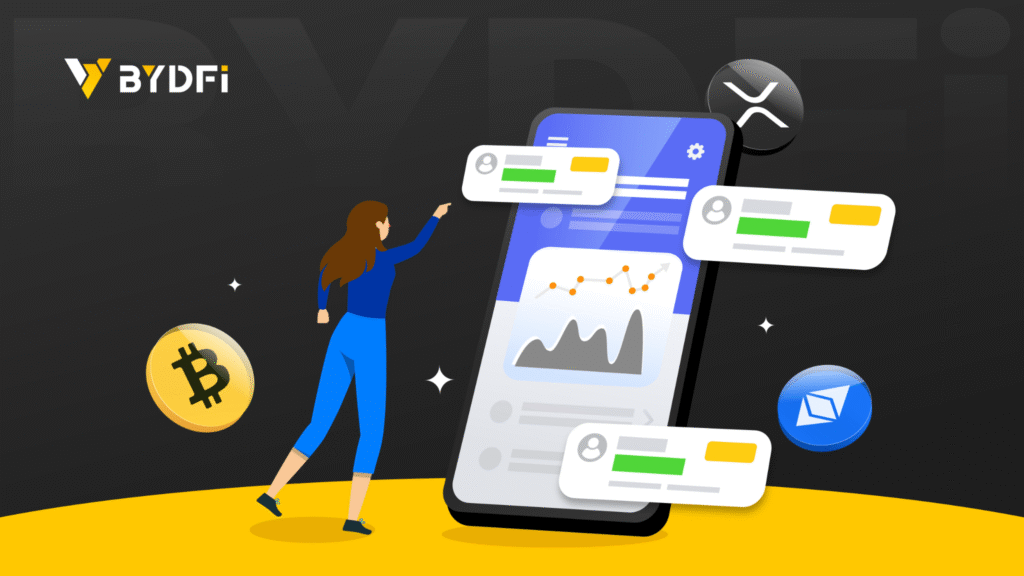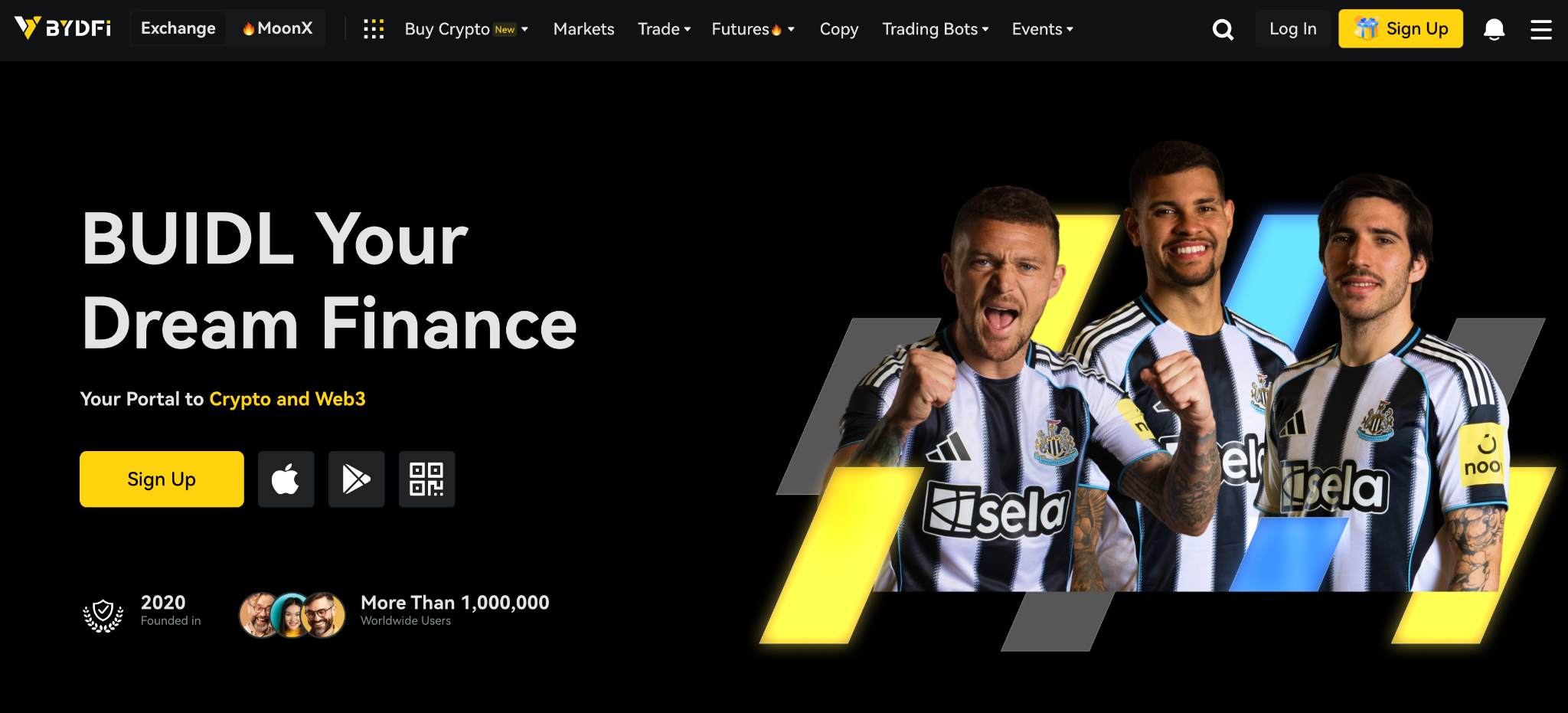In the world of cryptocurrency, everyone wants alpha – but not everyone has time to chart candles, chase liquidity, or decode on-chain flows. That’s where copy trading comes in. Instead of spending sleepless nights staring at 5-minute charts, you can mirror professional traders and let their strategies play out on your account. Platforms like BYDFi make this process seamless – and if you’re curious about how to start copy trading, BYDFi offers one of the cleanest setups available for both beginners and experienced investors.
Recently, BYDFi has made headlines beyond the crypto community. The exchange signed a multi-year partnership with Newcastle United, one of the fastest-growing clubs in the Premier League. This collaboration highlights BYDFi’s credibility, global ambitions, and commitment to community – values that also reflect the core of copy trading itself.
What Copy Trading Actually Is
At its core, copy trading is straightforward:
You pick a trader, set your allocation, and your account mirrors their trades in real-time. If they go long on ETH at $2,500 with 5x leverage, your account does the same. If they short SOL after detecting a liquidity shift, your account follows automatically.
It’s essentially social trading meets automation – a way to leverage proven strategies without reinventing the wheel.
- For beginners, it removes decision fatigue.
- For busy professionals, it provides market exposure without screen time.
In a space dominated by volatility and limited attention spans, copy trading has quickly become a go-to entry point for both new investors and passive traders.
Why BYDFi Stands Out
Many exchanges now offer some form of copy trading, but BYDFi is gaining traction fast. Here’s why traders are drawn to it:
- Curated Trader Leaderboard – Ranked by ROI, consistency, and drawdowns to help you filter out the noise.
- Transparent Stats – Full visibility into win rates, leverage usage, and risk profiles.
- One-Click Mirroring – Easy allocation setup; execution is instant.
- Risk Controls – Custom stop-losses, copy ratios, and allocation caps.
- Multi-Asset Coverage – From BTC and ETH to trending meme coins and perpetual contracts.
What truly sets BYDFi apart isn’t just the features – it’s the trust factor. Backed by growing partnerships like Newcastle United, the exchange positions itself as a long-term player in a space crowded with short-lived platforms.

How to Start Copy Trading on BYDFi
BYDFi makes onboarding easy. Here’s how it works:
- Sign up for BYDFi – Quick registration with KYC-lite verification.
- Deposit Funds to Your Wallet – Add USDT, BTC, or supported assets. USDT is most commonly used for copy trades.
- Explore the Trader Hub – Browse leaderboards, filter by ROI, trading style, and risk appetite.
- Choose Your Trader – Whether it’s a scalper, swing trader, or meme coin specialist.
- Set Allocation and Risk – Define your copy ratio, stop-loss threshold, and max allocation.
- Monitor and Adjust – Watch performance in real-time, scale up allocation, or switch traders as needed.
For first-time users, the entire setup takes less than 10 minutes. With adjustable controls, you still retain risk management at every step.
Strategies Traders Use on BYDFi
Not all traders copy trade the same way. BYDFi hosts a wide range of archetypes you can mirror:
- Scalpers – Quick entries during volatility spikes, often over 20 trades a day with 55–65% win rates.
- Swing Traders – Capture macro trends, holding positions for days or weeks; some average 100%+ quarterly ROI.
- Altcoin Specialists – Chase short-term runs in meme coins or low-cap assets. High risk, but potentially high reward.
- Risk-Managed Pros – Focus on stable returns, tight drawdowns, and portfolio preservation.
This variety allows copiers to diversify – blending short-term momentum with long-term growth strategies.
Risk Management Still Matters
Let’s be clear: Copy trading is not a cheat code for risk-free returns. Even top traders experience losing streaks. The key is risk management:
- Diversify – Don’t allocate 100% to one trader. Spread it across two or three.
- Set Stop-Loss Limits – BYDFi lets you halt copy trading if losses exceed a set percentage.
- Allocate Wisely – Never mirror trades with your entire stack. Keep some funds aside.
- Study Behavior – Look at average holding times, leverage usage, and historical drawdowns.
These safety features act like circuit breakers, ensuring you stay in the game long enough to benefit from compounding gains.
Real Example: $500 Allocation
Let’s say you allocate $500 to a trader with a strong track record:
- Winning trade – Trader earns 20% on a SOL long → You make $100.
- Losing trade – Trader loses 10% on an ETH short → You’re down $50.
For instance, one recent trader on BYDFi’s leaderboard posted a 145% ROI over 90 days, with a maximum drawdown of just 12%. That illustrates how risk-adjusted performance can matter more than just raw profits.
Your PnL flows exactly as theirs does – scaled to your allocation. Over time, even modest but consistent ROI can lead to serious growth.
The Future of Copy Trading
Copy trading isn’t static. As technology evolves, BYDFi is already looking ahead with:
- AI-Assisted Matching – Pairing users with traders based on personal risk profiles.
- On-Chain Performance Badges – Verifiable trade stats beyond simple dashboards.
- Hybrid CEX + DEX Copying – Trade execution across centralized and decentralized liquidity.
The direction is clear: more transparency, smarter automation, and wider access for traders around the world.
Final Thoughts
For those who don’t have time to live on TradingView, BYDFi’s copy trading offers a practical way to plug into professional strategies – while still maintaining control of your capital. Combined with its high-profile partnership with Newcastle United, the exchange has positioned itself as a trustworthy and globally expanding crypto trading hub.
If you’re curious, it’s simple: explore the Trader Hub, learn how copy trading works, and start with an allocation you’re comfortable with. From there, you can scale as your confidence grows.
In crypto, edges fade fast. Sometimes, the smartest move isn’t building from scratch – it’s riding with those already proving they can win.








